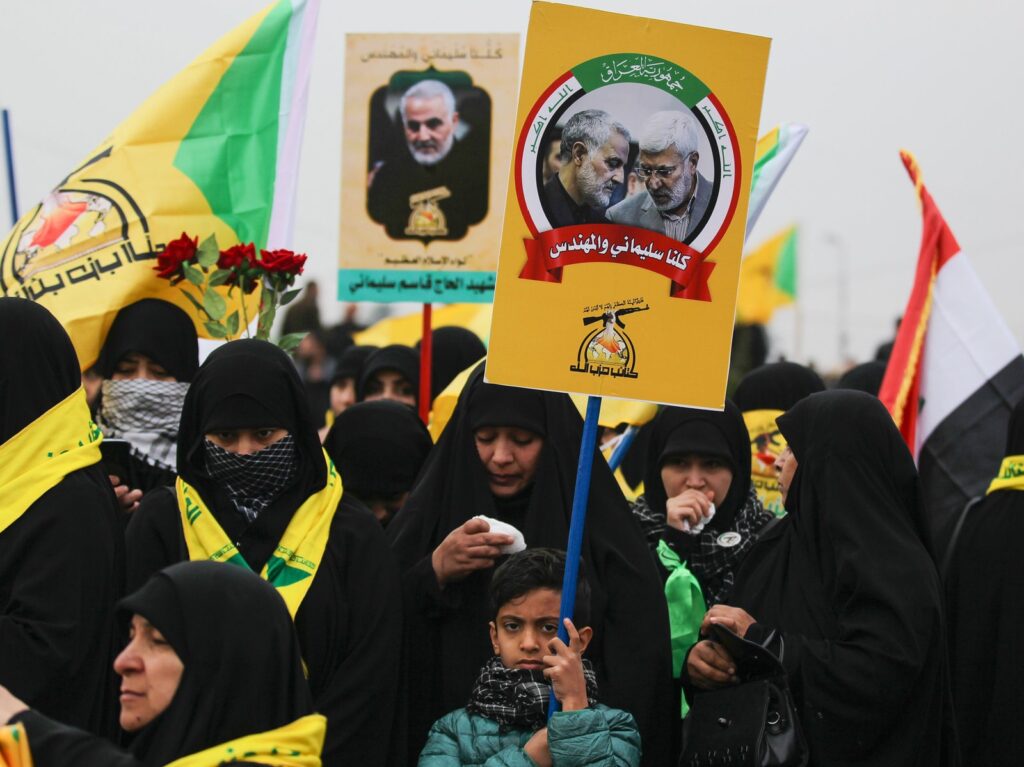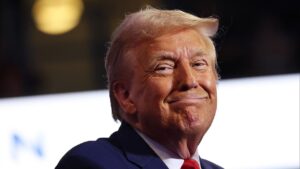
Iraqis turned out in droves Saturday to mourn Iranian Maj. Gen. Qassem Soleimani and Iraqi militia commander Abu Mahdi al-Muhandis, just a day and a half after both men were killed in a U.S airstrike.
President Trump tweeted Saturday afternoon that if Iran struck “any Americans, or American assets, we have targeted 52 Iranian sites (representing the 52 American hostages taken by Iran many years ago), some at a very high level & important to Iran & the Iranian culture, and those targets, and Iran itself, WILL BE HIT VERY FAST AND VERY HARD. The USA wants no more threats!”
The White House also delivered to Congress a formal notification of the drone strike that killed Soleimani, according to two congressional aides. The notification is required by the War Powers Act of 1973, which mandates that the president must notify Congress of foreign military action within 48 hours.
Thousands of mourners clad in black gathered for the funeral procession of Soleimani and al-Muhandis, as the bodies of the two commanders were carriedthrough the Iraqi capital. Chants of “America is the Great Satan” and “Death to America” rippled through the throngs of demonstrators, many of whom held portraits of both men and the flags of Iran-backed militias.
The procession was held amid growing fears in Iraq — and throughout the Middle East — about what Soleimani’s death could mean for stability in the region. While Trump, who authorized the attack, said it was carried out in order to prevent war, experts fear rising tensions will soon give way to new bloodshed.
The Department of Homeland Security warned Saturday that Iran is capable of conducting terror attacks inside the U.S. While noting that there is no evidence of a “specific, credible threat,” the DHS bulletin went on to say, “Previous homeland-based plots have included, among other things, scouting and planning against infrastructure targets and cyber enabled attacks against a range of U.S.-based targets.” Iran, with its “robust cyber program,” is capable of disrupting critical U.S. infrastructure, DHS said.
Against this backdrop of apprehension,Iraqi civilians have found themselves caught in the middle of a standoff between neighboring Iran, which has been vying for regional supremacy, and the U.S.
“At the beginning, I was very happy, because many people died because of Iran and Qassem Soleimani,” protester Halah al-Chilidi told NPR’s Weekend Edition Saturday. “But at the same time, I love my country. I don’t want my country to be a battlefield between Iran and the USA.”
Together with her daughters, Chilidi has taken part in the anti-government protests that have wracked Iraq for months. Hundreds died after many of those rallies devolved into violence between security forces and protesters. Still, despite her frustration with her government, she dreads even more the armed escalation that may come of the U.S. attack on Iraqi soil.
“It’s very dangerous, more dangerous than before,” she said. “We don’t know from where the hit will come — the Iranians or the militias. We don’t know.”
The tensions between Washington and Tehran reached a fever pitch early Friday, when a drone strike outside the Baghdad airport hit a vehicle carrying Soleimani, the prominent commander of Iran’s Quds force,an elite military unit that operates outside the country’s borders.
Trump defended the killing Friday as an attempt to “stop a war,” not start one, asserting that Soleimani had helped orchestrate attempts to storm the U.S. Embassy in Baghdad earlier in the week and saying the Iranian general had other attacks in store for American diplomats. Soleimani, 62, had built a towering reputation during his long career directing proxy forces, cultivating Iran’s influence across the Persian Gulf region — and, according to administration officials, leading operations that caused the deaths of hundreds of U.S. service members.
On Friday, the State Department said Iran had been plotting “imminent attacks” aimed at Americans, but did not provide specifics.
Iran’s leaders, meanwhile, have responded with vows of revenge.
In a conversation with reporters Saturday outside Soleimani’s home in Iran’s capital, Tehran, Iranian President Hassan Rouhani said the U.S. had made a great mistake, “the effects of which will be felt for years to come.”
One regional commander of Iran’s Islamic Revolution Guard Corps, Gholamali Abuhamzeh, was quoted saying that the Iranian military stands prepared to strike several dozen potential American targets in the Middle East.
“Thirty-five vital American positions in the region are within the reach of the Islamic Republic, and Tel Aviv — the U.S.’ heart and life — is also within our reach,” said Abuhamzeh, according to Iran’s Tasnim News Agency.
Demonstrators hold aloft portraits of Iraqi paramilitary chief Abu Mahdi al-Muhandis and Iranian military leader Qassem Soleimani during the funeral procession Saturday in Baghdad. The crowd of thousands chanted “Death to America” at times.Ahmad Al-Rubaye/AFP via Getty Images
The reaction among other countries has varied, with Israel applauding the strike and many others — including Iraq — forcefully condemning it. The Iraqi parliament plans to meet this weekend for an emergency session, during which lawmakers are expected to discuss the possibility of expelling the roughly 5,000 U.S. troops who remain in the country.
Hadi al-Amiri, a lawmaker and prominent militia member who has been named as a potential successor to Muhandis as deputy commander of the Popular Mobilization Forces, threatened as much on Saturday. “Rest assured,” he said while standing in front of Muhandis’ coffin, according to The Associated Press, “the price of your pure blood will be the exit of U.S. forces from Iraq forever.”
American authorities have already been warning U.S. civilians to stay away from the country if they can. In the wake of the violence outside the embassy in Baghdad, the State Department advised travelers that they would be “at high risk for violence and kidnapping.” At the same time, the Pentagon also deployed another 750 soldiers to the region immediately following the clash at the embassy, with more promised in the days to come.













